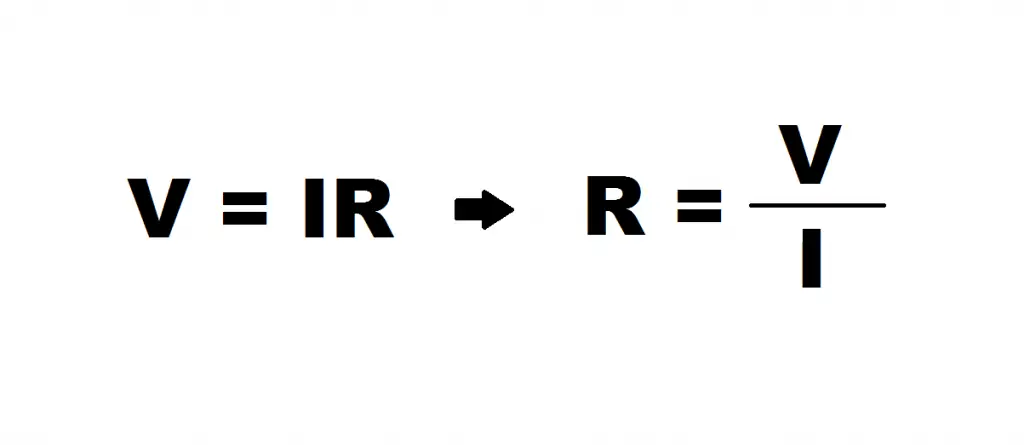The light bulb was one of the greatest inventions in our history.
It helped light up our homes, workplaces, streets and many other areas and aspects of everyday life.
This meant we could carry out tasks late into the night, without having to carry around a candle which wasn’t a very efficient way of lighting up a space.
But, is a light bulb a resistor? A light bulb, while not a traditional resistor, does behave like a resistor. A resistor is a component that limits the flow of electrons. When these electrons flow through a resistor, they face ‘resistance’, and a lot of their energy is transformed into other forms of energy like heat.
This concept holds true for a light bulb as well. As electricity travels through the filament of a light bulb (which is essentially a resistor) energy is transformed into heat and light.
Why a light bulb is not exactly a resistor
The first thing we need to understand is the resistor. Then we can understand why the light bulb isn’t exactly a resistor, but behaves like one.
As mentioned above, a resistor is a component that limits the flow of current in electrical and electronic circuits.
However, there is more to it than that. Ohmic resistance is a material’s opposition to the flow of electric current, and is denoted in ohms.
There is a formula that helps us find the ohmic resistance of a resistor which is shown below.

An Ohmic resistor obeys Ohm’s law, as proven by the formula above. An increase in Voltage causes a linear increase in Current. An ohmic resistor holds its value no matter what current is flowing through it.
A non-ohmic resistor on the other hand, does not follow Ohm’s law. An increase in Voltage creates an non-linear increase in current.
The resistance of the material is changed depending on the amount of current moving through it.
How a light bulb behaves like a resistor
Given the difference between an Ohmic and Non-Ohmic resistor, we can take a closer look at how a light bulb behaves like a resistor and isn’t a traditional ohmic resistor.
All light bulbs contain a filament that has some form of resistance. As electricity travels through the filament it encounters this resistance and energy is transformed into light and heat.
The most common material used in the filament of an incandescent lamp is Tungsten.
Tungsten has a cold resistance of 9.6 ohms at 100 watts. If 120 volts is applied, using ohm’s law we get a current of 12.5 amps.
But, the temperature of the tungsten heats up and so does its resistance. At the same voltage of 120 volts the resistance increases to 144 ohms and the resulting current is 0.83 amps.
As you can see the resistance of the filament changes and therefore is classified as a non-ohmic resistance.
Also, if a greater voltage is applied to the light bulb, the temperature of the filament is going to increase and its resistance is going to decrease.
Another reason it behaves like a resistor is due to the fact that the filament is a coil. A straight wire already has a resistance, when wound into a coil this resistance increases.
Can you use a light bulb in a circuit as a resistor?
So, now we know that a light bulb isn’t exactly a conventional resistor (it isn’t ohmic), could you use it in a circuit to replace the resistor to do the same job which is to provide resistance.
While it does provide resistance, using a light bulb in a circuit instead of a conventional ohmic resistor would be very inefficient. As you saw earlier, a lot of energy is lost through light and heat.
The other reason you wouldn’t want to use a light bulb in a circuit to replace a resistor is due to the fact that the light bulb is non-ohmic. Its resistance is not going to remain constant and follow ohm’s law.
The light bulb’s resistance will change with varying temperatures and voltage, which is not ideal for an electrical or electronic circuit as it will require a constant resistance.
What material in the light bulb causes it to be a resistor?
The most commonly used material that is used in light bulbs today that cause it to behave like a resistor is Tungsten.
However, light bulbs did not use Tungsten early on.
The first commercially light bulb filaments were made from Carbonized paper or Bamboo.
Again, these materials used in the light bulb have a resistance, causing the light bulb to behave like a resistor.
The carbon material used in the light bulb has a negative temperature coefficient of resistance. What this means is that as it increases in temperature, its resistance decreases.
This causes fluctuations in power, as the current through the circuit changes as the resistance changes.
Does the efficiency of the light bulb decrease due to it behaving like a resistor?
The creation of the light bulb has been a pivotal point in our history, but it isn’t the most efficient way to light up a space.
When current passes through the tungsten filament, it heats up to temperatures of 2,000 to 3,300 K (1,730 to 3,030 °C; 3,140 to 5,480 °F). However, these temperatures are not high enough to melt the tungsten filament.
We know that some of this energy is transformed into light, but most of the energy is transformed into heat due to the resistive nature of the tungsten filament.
What are the alternatives to using a light bulb that behaves less like a resistor?
A Light Emitting Diode (LED) is an alternative to using a Light Bulb.
But, the LED also has some sort of resistance, and causes it to behave like a resistor. However, the resistance of the LED is much lower than that of a light bulb.
Also, the LED does dissipate the same level of heat as a light bulb does thus making it a more efficient alternative.
Does the resistance of the light bulb change?
Yes, as most of the materials used as the filaments for a light bulb have a negative temperature coefficient of resistance.
So, as the light bulb filament heats up, it’s electrical resistance decreases.
The temperature of the filament is largely influenced by the amount of current flowing through it.
The more current, the hotter it gets and therefore the resistance decreases. As the current decreases, so does the temperature and therefore the resistance increases.





